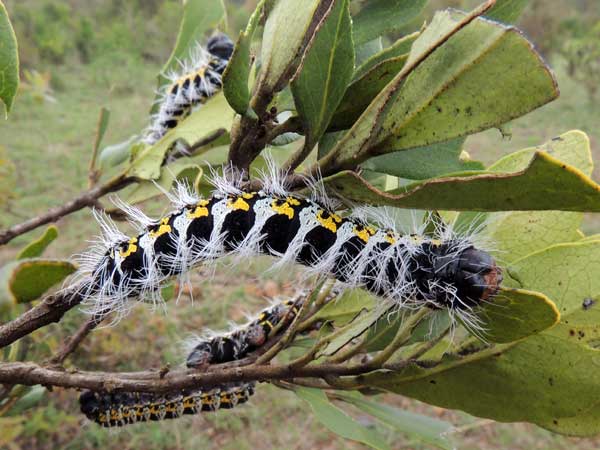Pallid Emperor
Cirina forda

These larvae were part of population explosion near Nyeri, Kenya. Dec. 2015. They were working to defoliate Carissa edulis.
This larva is defended by virtue of irritating hairs and the vivid yellow, black and white pattern is a warning for birds and other insect eaters. Near Nyeri I found them in super abundance moving across the ground and crawling into homes. Their favored food plant here was Carissa which has sharp spines and foliage toxic to grazing animals. Over grazing has led to an abundance of this plant and likewise a banquet for these insects. The adult is a large, rather non-descript moth, mostly beige in color with a pair of dark spots in the hindwings. Follow the images links below to see how the moth looks. Most insect larvae are not nearly so easily identified. Also this insect feeds on a wide variety of unrelated plants unlike many insect species.
Professor Matt F. A. Ivbijaro at University of Ibadan reported on the use of these caterpillars as food in the west of Africa. The nutritional analysis demonstrated their high food value, including protein. When there is such a population explosion it would make sense for people to exploit this resource! Edible Insects of Nigeria.